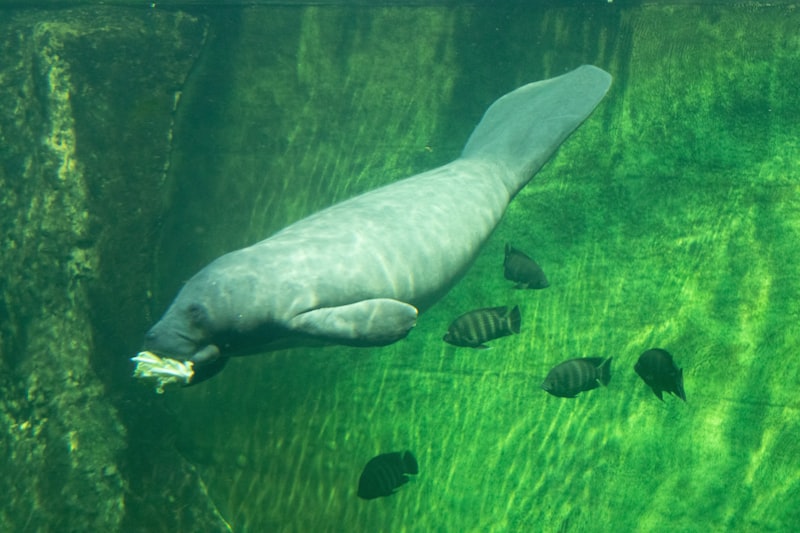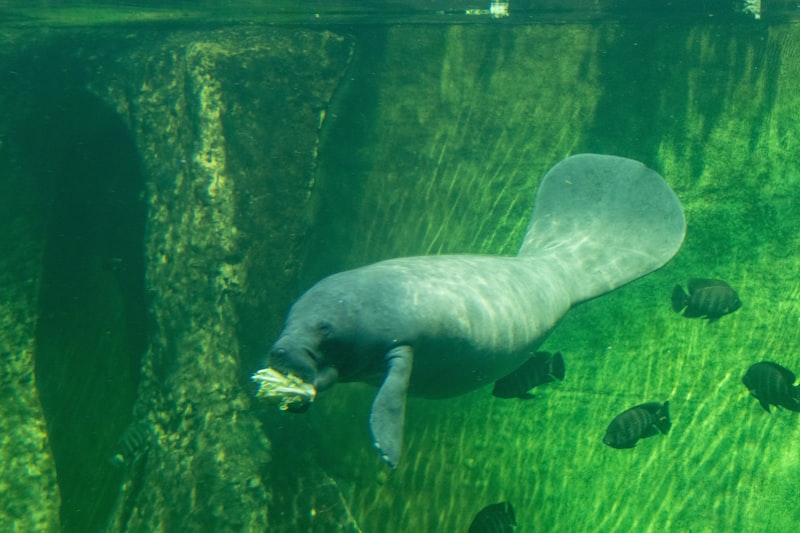One of the primary threats to coral reefs is climate change. Rising sea temperatures cause coral bleaching, where corals expel symbiotic algae, turning them stark white and vulnerable to disease. This phenomenon, exacerbated by ocean acidification from increased carbon dioxide levels, weakens reefs over time, hindering their ability to recover.
Pollution also poses a significant risk. Runoff from land carries sediment, nutrients, and chemicals that can smother corals and foster harmful algal blooms. Plastics and debris entangle and suffocate marine life, further disrupting fragile reef ecosystems.
Overfishing and destructive fishing practices compound these issues. Dynamite and cyanide fishing, though illegal in many places, continue to devastate reefs by directly damaging coral structures and depleting fish populations crucial to reef health.
Despite these challenges, there are hopeful solutions on the horizon. Marine protected areas (MPAs) play a crucial role in safeguarding coral reefs by restricting fishing and regulating human activities within their boundaries. Sustainable fishing practices, such as using selective gear and implementing quotas, help mitigate the impact on reef ecosystems while ensuring livelihoods.
Innovative coral restoration initiatives are also gaining traction. Techniques like coral gardening involve cultivating fragments of healthy corals in nurseries and transplanting them onto damaged reefs, promoting growth and resilience.
Public awareness and education are vital in the fight to protect coral reefs. Efforts to reduce carbon emissions, minimize pollution, and support sustainable tourism practices can collectively make a substantial difference in preserving these invaluable ecosystems for future generations.

Protecting coral reefs requires a concerted global effort, combining scientific research, policy interventions, and community engagement. By addressing the root causes of coral reef decline and implementing effective conservation strategies, we can ensure these underwater wonders thrive for years to come.
Bleached Futures: Tackling Coral Reef Decline with Innovative Solutions
Imagine a world where vibrant coral reefs, once teeming with life and color, are now facing a silent crisis. The phenomenon of coral bleaching, exacerbated by climate change and environmental stressors, has put these underwater ecosystems at risk. But amidst these challenges, innovative solutions are emerging to safeguard the future of coral reefs.
Coral bleaching occurs when corals expel the algae living in their tissues, causing them to turn stark white. This expulsion is often triggered by rising sea temperatures and other stress factors like pollution and overfishing. Without their colorful algae partners, corals become vulnerable to disease and starvation, leading to widespread reef degradation.
To combat this crisis, scientists and conservationists are exploring groundbreaking techniques. One promising approach involves the development of heat-resistant coral strains through selective breeding and genetic modification. By enhancing the resilience of corals to warmer waters, these efforts aim to create reefs better equipped to withstand future climate scenarios.
Additionally, restoration efforts are underway using artificial reefs and coral nurseries. These nurseries cultivate young corals in controlled environments before transplanting them onto damaged reefs. This method not only accelerates reef recovery but also promotes genetic diversity, crucial for long-term reef health.
Moreover, innovative technologies such as 3D printing are being harnessed to create artificial structures that mimic natural coral habitats. These structures provide shelter for marine life and assist in rebuilding degraded reef systems, offering a lifeline to struggling ecosystems.
Educational initiatives and community engagement play pivotal roles in these conservation efforts. By raising awareness about the importance of coral reefs and fostering local stewardship, communities around the world are becoming empowered guardians of their marine environments.
As we navigate the complexities of coral reef conservation, one thing remains clear: the future of these underwater wonders hinges on our collective actions today. By embracing innovation and collaboration, we can strive towards a future where coral reefs thrive once more, ensuring their irreplaceable beauty and biodiversity endure for generations to come.
Ocean Guardians: Strategies to Safeguard Our Coral Reefs

Coral reefs are not just vibrant underwater cities; they are crucial ecosystems that support a staggering amount of marine life. These “rainforests of the sea” face unprecedented threats today, from climate change to pollution and overfishing. As ocean temperatures rise and acidity levels increase, coral bleaching has become a widespread issue, causing reefs to lose their vibrant colors and essential nutrients. To combat these challenges and ensure the survival of our coral reefs, effective strategies are urgently needed.
One innovative approach gaining traction is the establishment of marine protected areas (MPAs). These zones act as sanctuaries where fishing and other extractive activities are regulated or prohibited. By limiting human interference, MPAs allow coral reefs to recover and thrive. Imagine these areas as underwater havens where corals can rebuild their strength, akin to wildlife reserves on land that provide safe spaces for endangered species.
Additionally, promoting sustainable fishing practices is crucial. Overfishing disrupts the delicate balance of coral reef ecosystems by removing key species that help maintain their health. Implementing quotas, size limits, and seasonal closures can help fish populations rebound, thereby supporting the overall resilience of coral reefs. It’s like maintaining a buffet table where guests are allowed to take only what they need, ensuring there’s always enough food for everyone.
Education and awareness play pivotal roles as well. Many people are unaware of how their everyday actions impact coral reefs. From reducing plastic waste to choosing sustainable seafood options, individuals can make a significant difference. Picture each person as a guardian of a small garden—every effort to nurture the environment contributes to the collective health of our planet’s underwater gardens.
Furthermore, scientific research and technological innovation continue to advance our understanding of coral reefs and provide new tools for conservation. From coral transplantation techniques to underwater drones monitoring reef health, these innovations offer hope for the future of coral reefs worldwide. It’s like equipping our firefighters with the latest tools to battle forest fires—they become more effective in saving our natural treasures.
Rising Tides, Rising Threats: Battling Challenges to Coral Reef Conservation
One of the foremost threats is climate change. Rising sea temperatures have led to coral bleaching, a phenomenon where corals expel the algae living in their tissues, draining them of their vibrant colors and weakening their resilience. As global warming continues unabated, these bleaching events become more frequent and severe, leaving behind ghostly white skeletons where thriving reefs once flourished.
Pollution also poses a significant danger. Runoff from agricultural lands introduces sediment, nutrients, and harmful chemicals into marine environments. These pollutants can smother corals, disrupt their delicate balance, and fuel the growth of harmful algae that outcompete coral for space and resources.
Overfishing further exacerbates the situation. Unsustainable fishing practices deplete fish populations that play crucial roles in reef ecosystems. Without these key species to maintain balance, coral reefs struggle to recover from environmental stressors and are more susceptible to collapse.
Physical destruction from human activities, such as coastal development and tourism, adds another layer of complexity. Dynamite fishing, anchor damage, and careless snorkeling can physically break apart reefs or trample fragile corals, impairing their ability to regenerate and adapt.
Efforts to combat these challenges are underway worldwide. Conservation initiatives focus on creating marine protected areas, implementing sustainable fishing practices, and reducing pollution through community education and policy advocacy. Scientists are also exploring innovative solutions like coral gardening, where fragments of healthy corals are grown and transplanted onto damaged reefs to promote recovery.
The battle to preserve coral reefs is multifaceted and urgent. It requires global cooperation, innovative strategies, and a commitment to safeguarding these invaluable ecosystems for future generations. As we navigate these rising tides of threats, proactive conservation measures offer hope in the face of adversity, striving to ensure that coral reefs remain resilient and vibrant into the future.
From Pollution to Preservation: Promising Steps in Coral Reef Protection
One of the pivotal strategies involves the establishment of marine protected areas (MPAs). These zones act as sanctuaries, shielding reefs from destructive human activities like overfishing and anchoring. By limiting human interference, MPAs allow coral reefs to regenerate and thrive.
Furthermore, innovative technologies are playing a crucial role in monitoring and preserving coral reefs. Remote sensing tools and underwater drones provide researchers with real-time data on reef health and ecosystem dynamics. This data aids in early detection of threats such as coral bleaching and allows for timely intervention.
Community engagement also stands as a pillar of coral reef conservation efforts. Local communities, whose livelihoods often depend on reefs, are increasingly involved in conservation projects. Through education and awareness programs, these communities become stewards of their marine environments, advocating for sustainable practices and reducing pollution runoff.
Moreover, scientific research continues to uncover new insights into coral resilience and adaptation. Genetic studies are exploring how certain coral species withstand environmental stressors, offering hope for breeding programs aimed at cultivating more resilient reefs.
The journey from pollution to preservation for coral reefs is multifaceted and challenging, yet filled with promise. Through a combination of marine protected areas, technological advancements, community involvement, and cutting-edge research, we can safeguard these irreplaceable ecosystems for future generations.
The Coral Conundrum: Balancing Conservation Efforts and Human Impact
However, the rapid pace of industrialization, climate change, and overfishing has placed immense pressure on these underwater marvels. The result? Declining coral health, bleaching events, and loss of biodiversity. It’s a stark reminder of how human activities can adversely affect even the most resilient ecosystems.
Conservation efforts play a pivotal role in safeguarding coral reefs. Organizations and governments worldwide have initiated marine protected areas, imposed fishing regulations, and promoted sustainable tourism practices. These actions aim to mitigate human impact and allow coral reefs to recover and thrive.
Yet, challenges persist. Finding the balance between conservation and human activities remains elusive. Local communities rely on coral reefs for their livelihoods, making sustainable development a complex goal. How can we ensure economic growth without compromising the very ecosystems we depend on?
Imagine coral reefs as bustling cities underwater, teeming with life and activity. Just like our cities, they need careful planning and management to sustainably support both wildlife and human needs. It’s about fostering a symbiotic relationship where conservation efforts bolster local economies and vice versa.
As we navigate this coral conundrum, education emerges as a powerful tool. By raising awareness about the importance of coral reefs and promoting eco-friendly practices, we empower individuals to become stewards of their marine environments. After all, small changes in behavior can have a ripple effect on the health of coral reefs worldwide.
Undersea Heroes: Innovations Driving Coral Reef Rehabilitation
Coral reefs, often dubbed the rainforests of the sea, are vital ecosystems supporting a myriad of marine life. However, these delicate environments face unprecedented threats, from climate change to pollution and overfishing. In response, a wave of innovative technologies and conservation efforts is emerging as beacons of hope for coral reef rehabilitation.
One promising innovation involves the use of 3D printing technology to create artificial reefs. These structures mimic natural coral formations, providing a habitat for marine organisms and restoring biodiversity. By strategically placing these artificial reefs in damaged areas, scientists aim to accelerate the recovery of degraded coral reefs.
Furthermore, advanced monitoring systems equipped with sensors and underwater drones play a crucial role in conservation efforts. These technologies allow researchers to gather real-time data on water quality, temperature fluctuations, and coral health. Such insights enable scientists to make informed decisions and implement targeted interventions to mitigate threats.
Another breakthrough involves coral gardening, a technique where fragments of healthy corals are grown and transplanted onto degraded reefs. This method not only helps replenish coral populations but also enhances genetic diversity, making reefs more resilient to environmental stressors.
Moreover, community-driven initiatives and partnerships with local stakeholders are integral to the success of coral reef conservation. Engaging coastal communities in reef restoration projects fosters stewardship and promotes sustainable fishing practices, ensuring the long-term health of coral ecosystems.
While coral reefs face unprecedented challenges, innovative technologies and collaborative efforts offer a glimmer of hope. By harnessing these advancements and empowering local communities, we can protect and restore these invaluable ecosystems for future generations to admire and cherish.
Frequently Asked Questions
Why are coral reefs important for marine biodiversity
Coral reefs are vital for marine biodiversity because they support a vast array of marine life. They provide habitats, shelter, and breeding grounds for numerous species, contributing significantly to the overall health and diversity of ocean ecosystems.
What are the main threats to coral reefs worldwide
Learn about the primary threats facing coral reefs globally, including climate change, ocean acidification, overfishing, pollution, and coral bleaching. Understand how these factors endanger reef ecosystems and what can be done to mitigate their impact.
What are effective conservation strategies for protecting coral reefs
Learn about effective conservation strategies designed to safeguard coral reefs. Discover methods such as marine protected areas, sustainable fishing practices, reducing pollution, and promoting coral reef resilience through restoration efforts.
How does climate change impact coral reef ecosystems
Learn how climate change affects coral reef ecosystems, including increased ocean temperatures leading to coral bleaching, acidification harming marine life, and sea level rise threatening coastal habitats.
How can individuals contribute to coral reef conservation efforts
Learn how individuals can actively contribute to coral reef conservation efforts through sustainable practices like responsible diving and snorkeling, supporting marine protected areas, reducing carbon footprint to mitigate climate change impacts, and advocating for policies that protect marine ecosystems.


